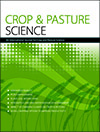CP21639Comparative study on the fertility and outcrossing characteristics of new dual-purpose genic male-sterile rice in China
 , Yan Chen, Yuping Luo, Yanran Wu, Yan Peng, Dandan Mao, Manzhong Liang, Xiaojun Dai and Liangbi Chen
, Yan Chen, Yuping Luo, Yanran Wu, Yan Peng, Dandan Mao, Manzhong Liang, Xiaojun Dai and Liangbi Chen
‘Two-line’ hybrid rice plays an important role in ensuring global food security. However, fertility instability and low hybrid seed production of sterile lines are urgent problems. In order to increase the stability of pollen sterility, we compared the low-temperature tolerance of fertile pollen development and outcrossing characteristics of new dual-purpose genic male-sterile lines and provide a new breeding standard of dual-purpose male-sterile lines which promotes the sustainable development of two-lines hybrid rice.




